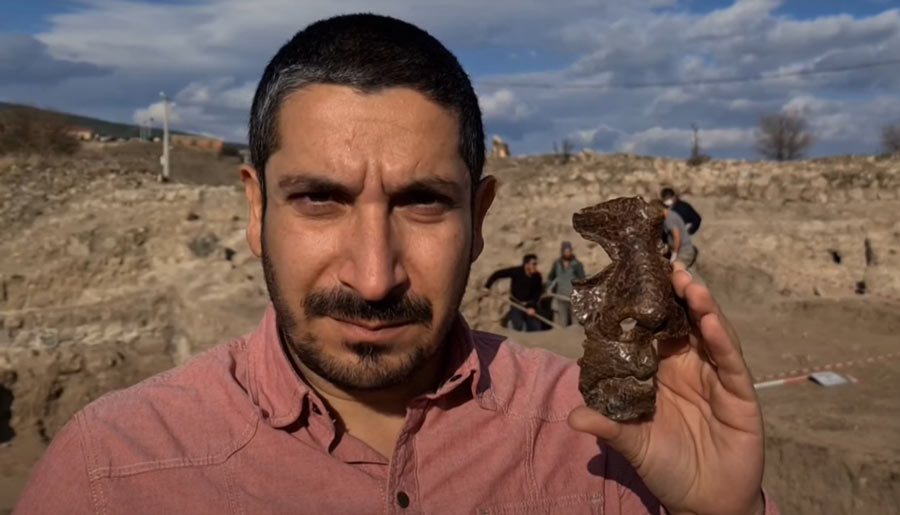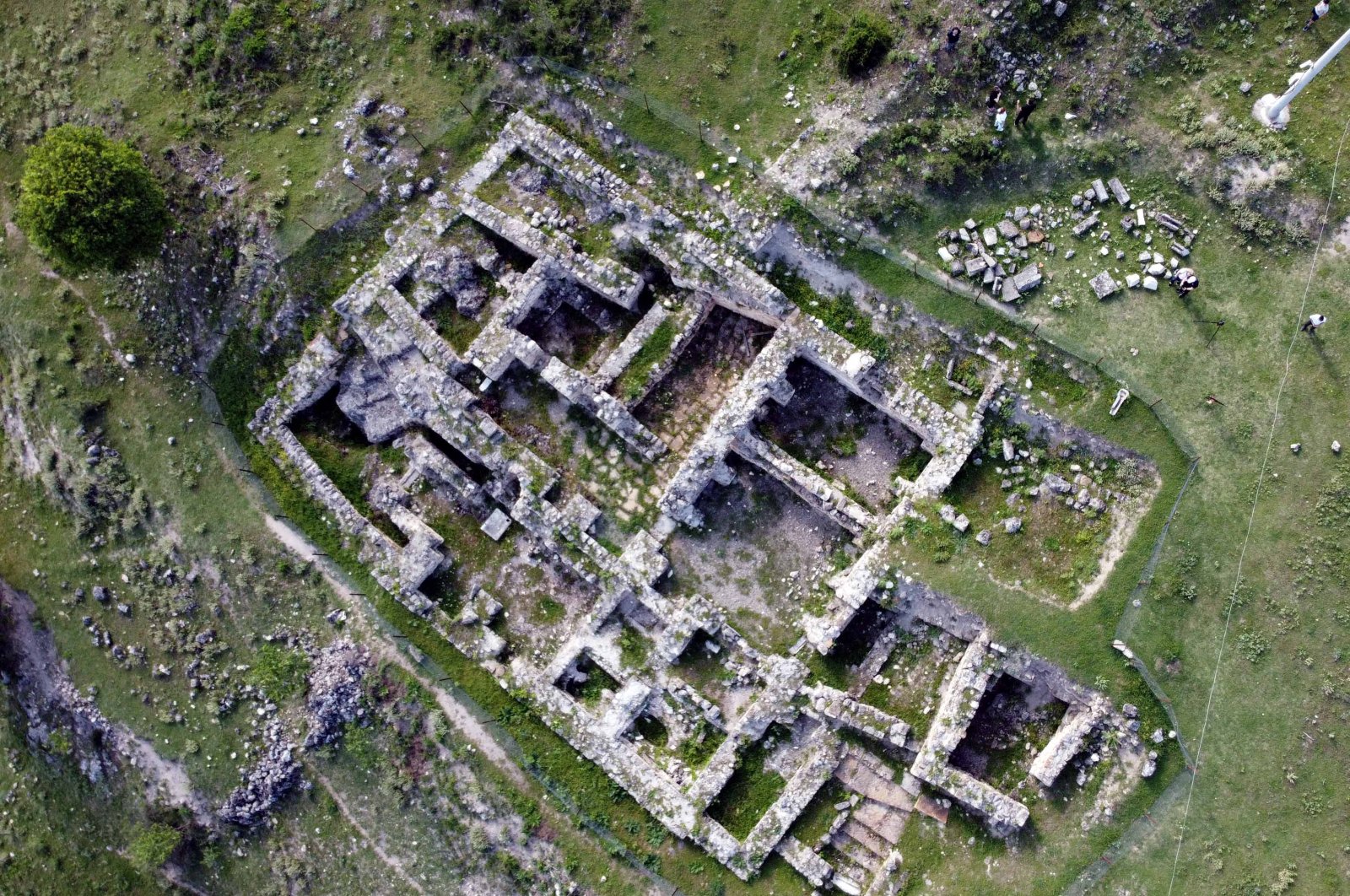The remains of an ancient Roman iron mask, estimated to be around 1,800 years old, were recently discovered in the Hadrianopolis Ancient City in Karabük, Turkey. This significant archaeological find is believed to have belonged to a Roman soldier, providing a glimpse into the military presence and activities in the region during the Roman period.

Hadrianopolis Ancient City
Hadrianopolis, located in the modern-day Eskipazar district of Karabük, was an important city in the Roman province of Paphlagonia. The city, named after the Roman Emperor Hadrian, flourished between the 1st and 4th centuries AD. It was known for its strategic location, connecting various parts of the Roman Empire, and for its rich architectural and cultural heritage.

### The Iron Mask
The iron mask is a rare and valuable artifact, typically associated with Roman cavalry units. These masks were often part of a helmet, used not only for protection but also for ceremonial purposes. They were designed to cover the face and sometimes the entire head, often adorned with intricate designs to signify rank and unit.
### Significance of the Discovery
1. **Historical Insight**: The mask provides insights into the Roman military presence in Hadrianopolis. It suggests that the city had a significant military component, possibly housing a garrison or serving as a strategic outpost.
2. **Cultural Exchange**: The discovery highlights the exchange of military technology and culture between different regions of the Roman Empire. It underscores the extent of Roman influence in Anatolia during this period.
3. **Archaeological Value**: The mask is a rare find, as iron artifacts from this period often deteriorate over time. Its preservation offers a unique opportunity for further study and conservation, shedding light on Roman metallurgy and craftsmanship.

### Archaeological Excavations
Excavations in Hadrianopolis have been ongoing, revealing various structures such as churches, baths, and mosaics that attest to the city’s historical significance. The discovery of the iron mask adds to a growing list of artifacts that help reconstruct the city’s past and its role within the Roman Empire.
### Future Research
The iron mask will likely undergo further analysis to determine its exact origins, the techniques used in its manufacture, and its context within the site. Researchers will also explore its possible connections to other Roman military sites in the region.
This discovery not only enriches our understanding of Roman military history but also enhances the cultural heritage of Karabük and its significance in the broader narrative of ancient history.





